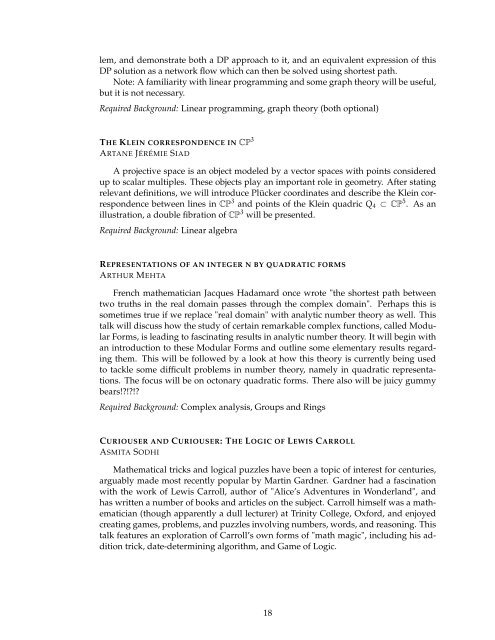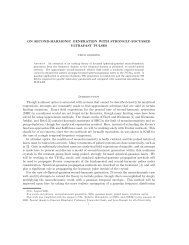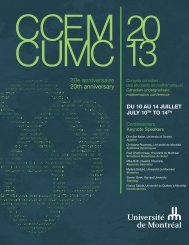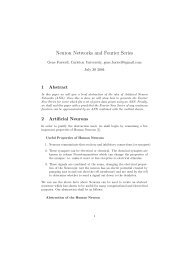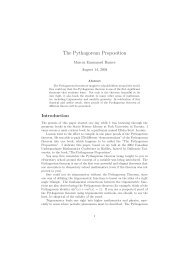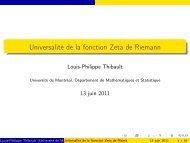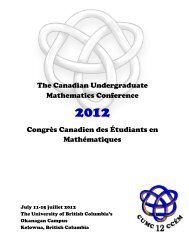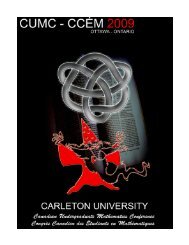booklet - CUMC - Canadian Mathematical Society
booklet - CUMC - Canadian Mathematical Society
booklet - CUMC - Canadian Mathematical Society
Create successful ePaper yourself
Turn your PDF publications into a flip-book with our unique Google optimized e-Paper software.
lem, and demonstrate both a DP approach to it, and an equivalent expression of thisDP solution as a network flow which can then be solved using shortest path.Note: A familiarity with linear programming and some graph theory will be useful,but it is not necessary.Required Background: Linear programming, graph theory (both optional)THE KLEIN CORRESPONDENCE IN CP 3ARTANE JÉRÉMIE SIADA projective space is an object modeled by a vector spaces with points consideredup to scalar multiples. These objects play an important role in geometry. After statingrelevant definitions, we will introduce Plücker coordinates and describe the Klein correspondencebetween lines in CP 3 and points of the Klein quadric Q 4 ⊂ CP 5 . As anillustration, a double fibration of CP 3 will be presented.Required Background: Linear algebraREPRESENTATIONS OF AN INTEGER N BY QUADRATIC FORMSARTHUR MEHTAFrench mathematician Jacques Hadamard once wrote "the shortest path betweentwo truths in the real domain passes through the complex domain". Perhaps this issometimes true if we replace "real domain" with analytic number theory as well. Thistalk will discuss how the study of certain remarkable complex functions, called ModularForms, is leading to fascinating results in analytic number theory. It will begin withan introduction to these Modular Forms and outline some elementary results regardingthem. This will be followed by a look at how this theory is currently being usedto tackle some difficult problems in number theory, namely in quadratic representations.The focus will be on octonary quadratic forms. There also will be juicy gummybears!?!?!?Required Background: Complex analysis, Groups and RingsCURIOUSER AND CURIOUSER: THE LOGIC OF LEWIS CARROLLASMITA SODHI<strong>Mathematical</strong> tricks and logical puzzles have been a topic of interest for centuries,arguably made most recently popular by Martin Gardner. Gardner had a fascinationwith the work of Lewis Carroll, author of "Alice’s Adventures in Wonderland", andhas written a number of books and articles on the subject. Carroll himself was a mathematician(though apparently a dull lecturer) at Trinity College, Oxford, and enjoyedcreating games, problems, and puzzles involving numbers, words, and reasoning. Thistalk features an exploration of Carroll’s own forms of "math magic", including his additiontrick, date-determining algorithm, and Game of Logic.18


